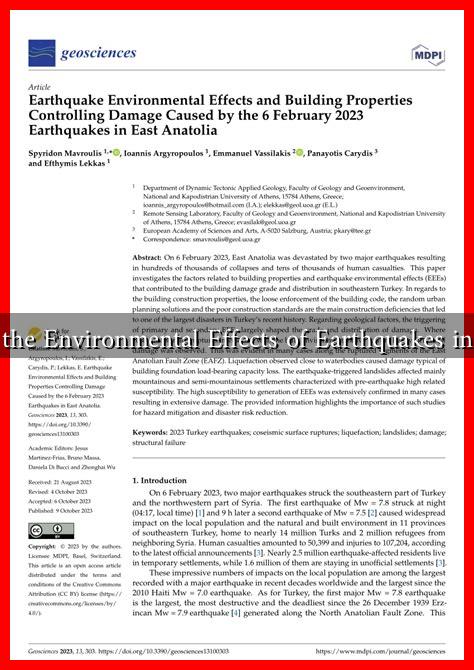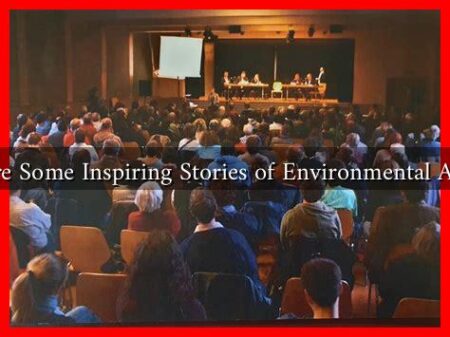-
Table of Contents
What Are the Environmental Effects of Earthquakes in Lebanon?
Lebanon, a country located at the intersection of the Arabian and Eurasian tectonic plates, is no stranger to seismic activity. The region has a long history of earthquakes, some of which have had devastating effects on both human life and the environment. Understanding the environmental consequences of these natural disasters is crucial for developing effective mitigation strategies and enhancing community resilience.
The Geological Context of Lebanon
Lebanon’s geological landscape is characterized by its complex tectonic setting. The country is traversed by several fault lines, including the Dead Sea Transform fault system, which is responsible for significant seismic activity. The last major earthquake in Lebanon occurred in 1956, registering a magnitude of 5.6, but smaller tremors are frequent.
. The geological instability poses risks not only to human infrastructure but also to the environment.
Immediate Environmental Effects
When an earthquake strikes, the immediate environmental effects can be profound and multifaceted. Some of the most notable impacts include:
- Soil Displacement: Earthquakes can cause significant soil liquefaction, leading to the displacement of soil and sediment. This can result in landslides, particularly in hilly or mountainous areas.
- Destruction of Vegetation: The shaking of the ground can uproot trees and destroy plant life, disrupting local ecosystems and habitats.
- Water Contamination: Seismic activity can damage water supply systems, leading to contamination of drinking water sources with pollutants and pathogens.
Long-term Environmental Consequences
The long-term environmental effects of earthquakes can be equally concerning. These include:
- Alteration of Landscapes: Earthquakes can permanently change the topography of an area, creating new landforms such as fissures and sinkholes.
- Impact on Biodiversity: The destruction of habitats can lead to a decline in local biodiversity, affecting both flora and fauna. Species that are already endangered may face increased threats.
- Soil Erosion: With vegetation destroyed and soil displaced, areas may become more susceptible to erosion, leading to loss of arable land and increased sedimentation in rivers and streams.
Case Studies: Historical Earthquakes in Lebanon
Examining historical earthquakes provides insight into the environmental impacts experienced in Lebanon. For instance, the 1759 earthquake, which struck the region with a magnitude estimated between 7.5 and 8.0, caused widespread destruction. Reports indicate that the quake led to significant landslides in the mountains, altering river courses and affecting local agriculture.
More recently, the 1956 earthquake resulted in considerable damage to infrastructure, but it also had lasting effects on the environment. The destruction of forests and agricultural land led to increased soil erosion, which has had ongoing implications for land use and agricultural productivity in the region.
Mitigation and Preparedness Strategies
Given the potential for significant environmental impacts from earthquakes, Lebanon must prioritize mitigation and preparedness strategies. Some effective measures include:
- Strengthening Infrastructure: Investing in earthquake-resistant buildings and infrastructure can reduce damage and subsequent environmental impacts.
- Environmental Monitoring: Implementing systems to monitor geological changes can help predict potential seismic activity and inform disaster response plans.
- Community Education: Raising awareness about earthquake preparedness can empower communities to take proactive measures to protect both human life and the environment.
Conclusion
Earthquakes in Lebanon pose significant risks not only to human life but also to the environment. The immediate and long-term effects can lead to soil displacement, destruction of vegetation, and alterations in local ecosystems. Historical case studies highlight the profound impact seismic events can have on the landscape and biodiversity. To mitigate these effects, Lebanon must invest in infrastructure, monitoring systems, and community education. By understanding and addressing the environmental consequences of earthquakes, Lebanon can enhance its resilience and protect its natural resources for future generations.
For more information on earthquake preparedness and environmental impacts, you can visit the United Nations Office for Disaster Risk Reduction.





